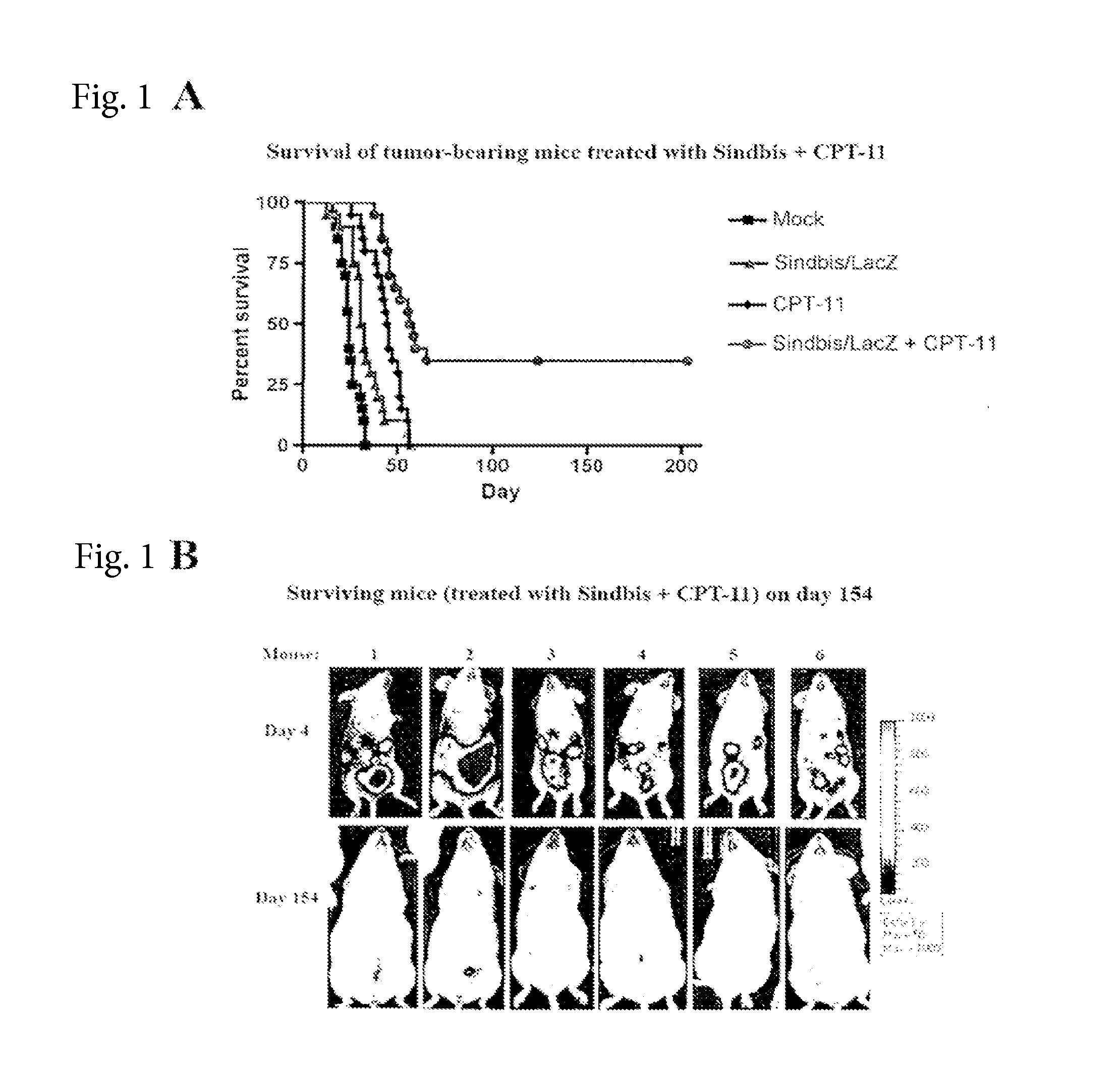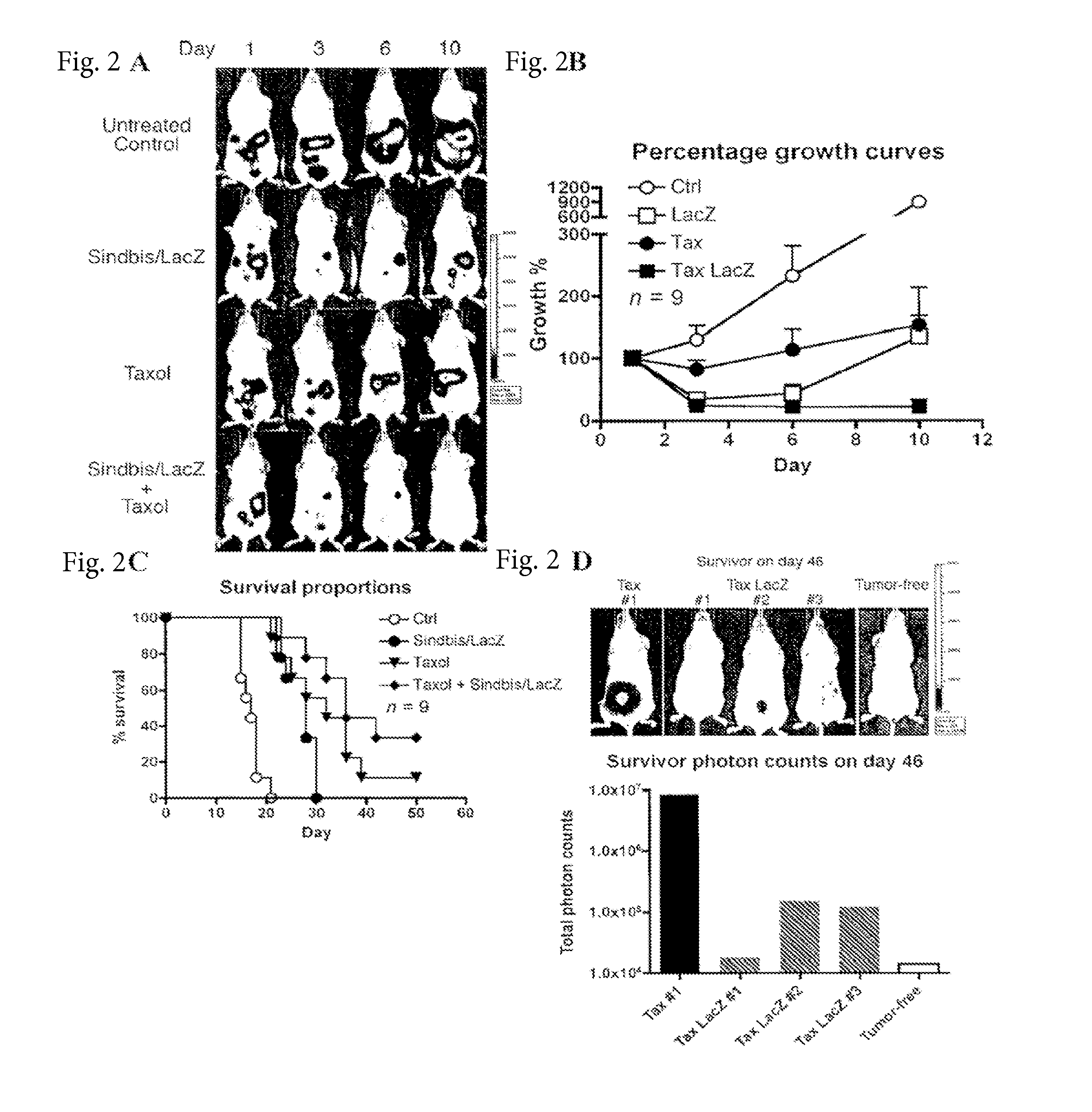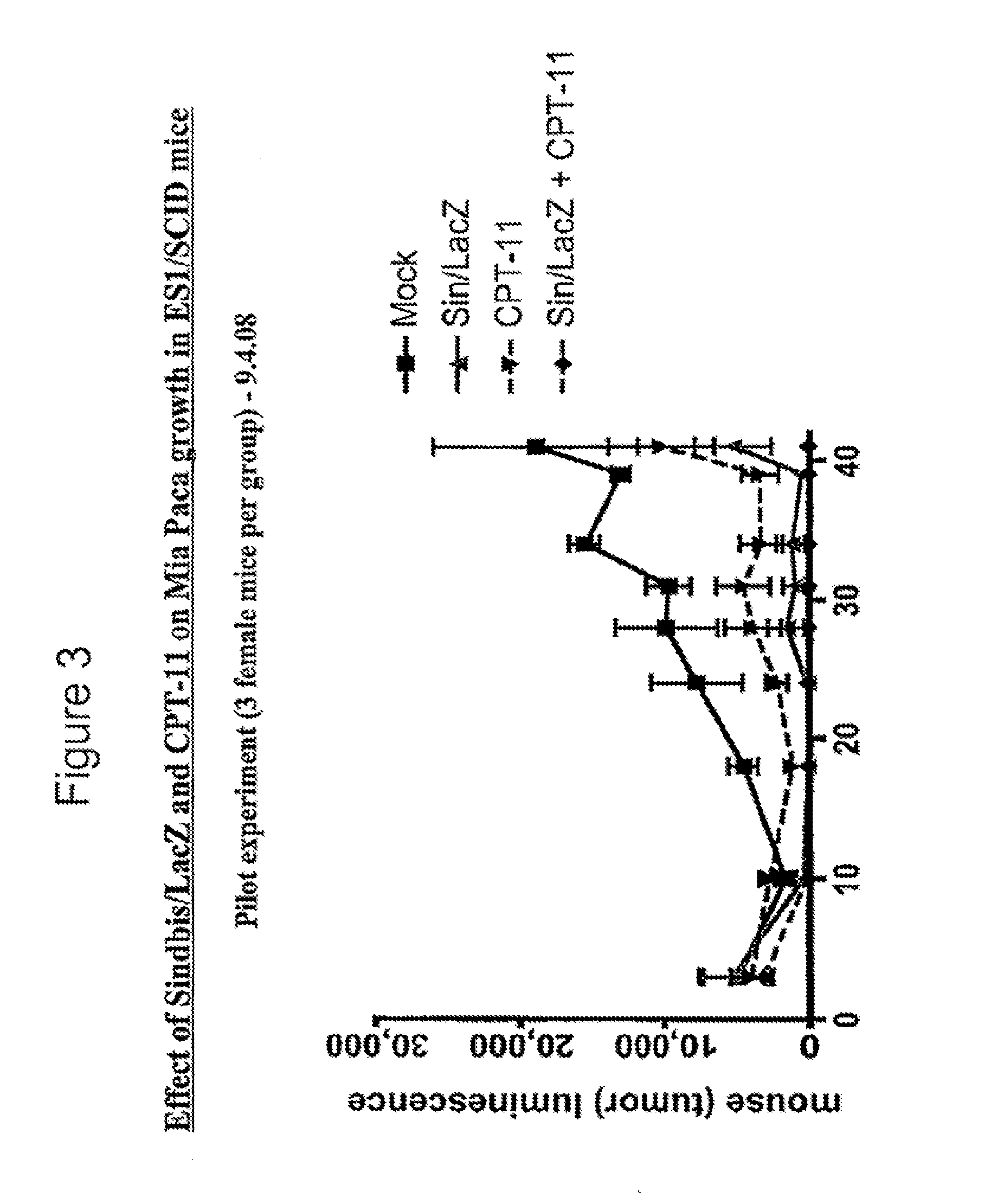Tumor Therapy With Antitumor Agents In Combination With Sindbis Virus-Based Vectors
a technology of sindbis virus and tumor-bearing mice, which is applied in the direction of viruses/bacteriophages, drug compositions, peptides/protein ingredients, etc., can solve the problems of prolonging the survival of es2/fluc tumor-bearing mice by 1-2 weeks, prolonging the survival of tumor-bearing mice for much longer periods of time, etc., to prolong the survival of tumor-bearing mi
- Summary
- Abstract
- Description
- Claims
- Application Information
AI Technical Summary
Benefits of technology
Problems solved by technology
Method used
Image
Examples
example 1
The Survival of Tumor-Bearing Mice is Greatly Prolonged by Combining CPT-11 and Sindbis Vectors
[0056]Without treatment, Es1c / SCID mice bearing ES2 / Fluc tumors survived for approximately 4 weeks. Mice treated with Sindbis / LacZ survived for approximately 10 days longer, and mice treated with CPT-11 survived for an additional ˜15 days. By day 57, all of the mice that were treated with either single therapy had died. The mice that were treated with both CPT-11 and Sindbis survived for longer, and significantly about 35% appear to have been cured of the cancer (although some of them seemed to have a low number of residual luminescent cells—see below). This experiment was repeated twice. Data from the first experiment was collected through 206 days, while data from the second experiment is available only through 127 days at the time of this writing. In both experiments there was a marked benefit over all other groups in the survival of the group treated with both CPT-11 and Sindbis, altho...
example 2
Combining Paclitaxel (Taxol®) and Sindbis Vectors Also Prolongs the Survival of Tumor-Bearing Mice
[0058]In order to test if the results obtained from treatment with CPT-11+Sindbis also occur with other chemotherapeutic drugs, the effect of Sindbis treatment plus Taxol® on tumor-bearing mice was tested. As with the CPT-11 experiments, the results show that the combination of the two therapies has a stronger therapeutic effect than the single treatments. The tumor load in double-treated mice was lower than in single-treated or control mice when they were imaged on day 3, 6 and 10 (FIG. 2A; quantified in FIG. 2B). In addition, the survival of the double-treated mice was prolonged compared to single-treated and control mice (FIG. 2C). Lastly, the surviving mice were imaged again on day 46, and the double-treated mice were shown to still have a low tumor-load (FIG. 2D).
[0059]This set of experiments illustrated that the combination of Taxol® and replication-defective (RD) Sindbis vector a...
example 3
[0073]Female Es1 / SCID mice were inoculated intraperitoneally with 5 million luciferase-expressing Mia Paca cells (a model for pancreatic cancer) on day 0. Mice were then divided into 4 groups: Mock (untreated), Sindbis / LacZ treated, CPT-11 treated, and Sindbis / LacZ+CPT-11 treated. The mice were treated 4 times a week, for 2 weeks, and then the treatment was stopped. The 3 double-treated mice appear to be tumor-free in all of the images taken since day 18. All of the untreated and single-treated mice have tumors that appear to be growing (FIG. 9).
Example 4
Introduction
[0074]The goal of cancer gene therapy is to achieve specific and efficient delivery of gene therapy vectors to tumor cells while reducing the impact of unwanted toxicity, associated with the vector of choice, to normal tissues. In addition, to maximize therapeutic effects, an ideal vector system should be able to achieve systemic delivery, via the bloodstream, to distal or metastasized tumor cells. Several viral vector s...
PUM
| Property | Measurement | Unit |
|---|---|---|
| time | aaaaa | aaaaa |
| time | aaaaa | aaaaa |
| size | aaaaa | aaaaa |
Abstract
Description
Claims
Application Information
 Login to View More
Login to View More - R&D
- Intellectual Property
- Life Sciences
- Materials
- Tech Scout
- Unparalleled Data Quality
- Higher Quality Content
- 60% Fewer Hallucinations
Browse by: Latest US Patents, China's latest patents, Technical Efficacy Thesaurus, Application Domain, Technology Topic, Popular Technical Reports.
© 2025 PatSnap. All rights reserved.Legal|Privacy policy|Modern Slavery Act Transparency Statement|Sitemap|About US| Contact US: help@patsnap.com



